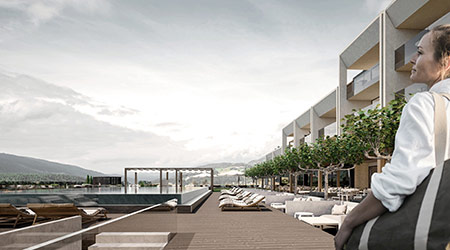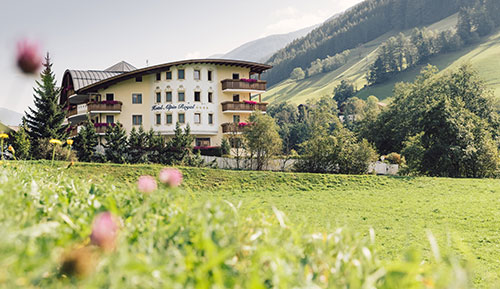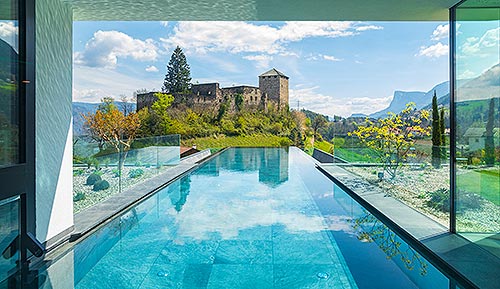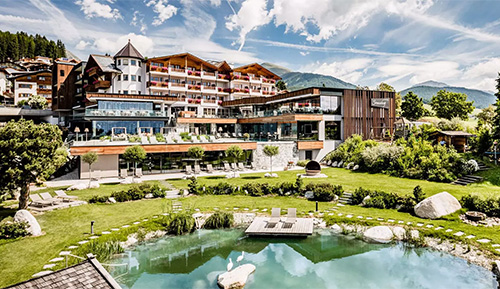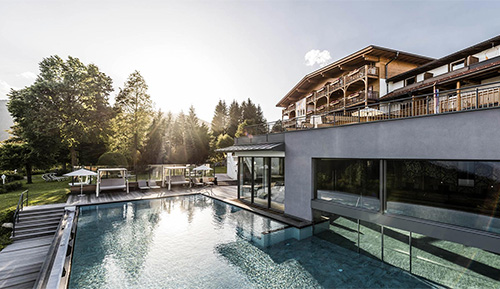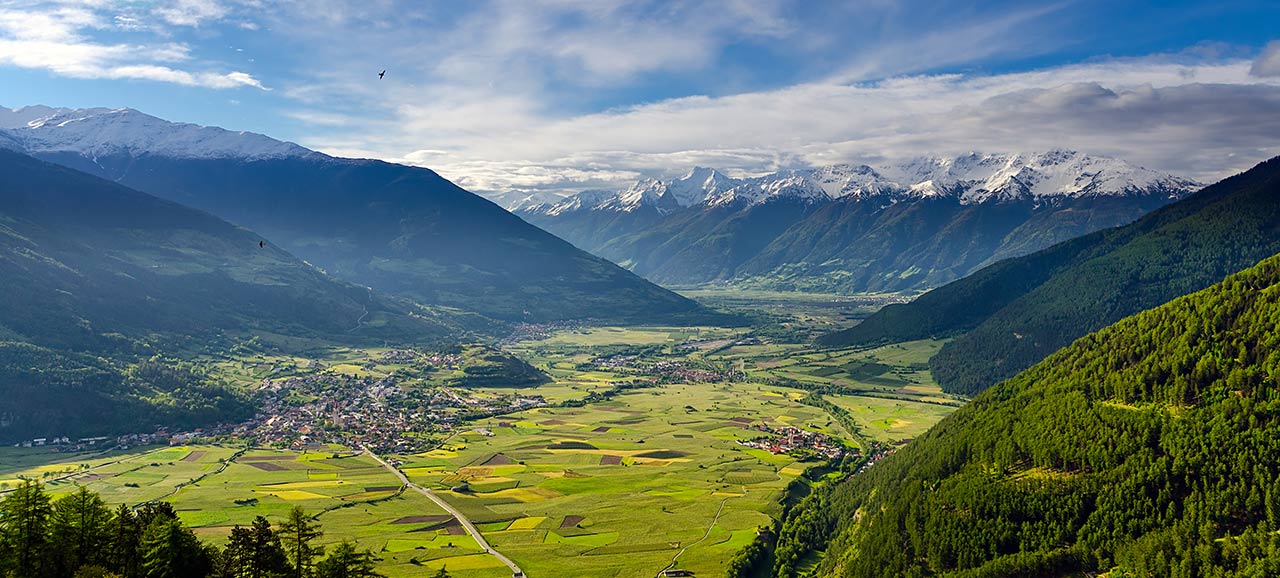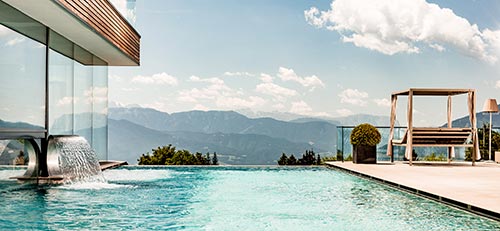Silandro in the Venosta valley and the highest bell tower of Tyrol
Halfway between Passo di Resia and Merano lies the community of Silandro with its hamlets of Corces, Covelano, Vezzano, Montetramontana and Montemezzodì. The village is recognisable from far off because of the bell tower, with its steeple rising to an acute point, of the church of Santa Maria Assunta. At 98 metres, it is the highest bell tower in Tyrol. It was destroyed in 1499 and afterwards in 1505 it was rebuilt higher and slimmer than its original form and the parish church was also redesigned in the Baroque style in 1759 and decorated with paintings by Adam Mölk. The interior of the church already had Gothic elements, dating from the earlier church, such as the marble portal of 1482.

Silandro is a community with a smiling face, part of whose village centre contains old historic buildings and whose hinterland offers a wealth of varied landscapes. The two hamlets of Montemezzodì and Montetramontana are one example. The first is distinguished by vineyards and groves of chestnut, the second, partly on the territory of the Stelvio Nature Park by dense forests and green meadows. The whole Silandro area is in fact a landscape full of contrasts, where glaciers and grassland, impressive peaks and gentle slopes contrast with one another.
Among picturesque streets lies the lively village centre with its shops, bars and restaurants, where you can taste delicacies from South Tyrolean and Italian cuisine. The centre of Silandro with its little workshops and shops, which sell clothing, souvenirs and handcrafts, is often regarded as a shopper's paradise. In summer, from the middle of July to the Middle of August, Silandro has "long Fridays" during which the shops stay open until 10 p.m.
In Silandro, which is ideal for those who enjoy culture, you can also find important historical art treasures. In particular the San Ingenuino Chapel, which was first mentioned in 1148 and in whose interior can be seen precious frescoes, such as the representation of the panorama of Silandro before the floods of 1731, in which you can make out the Stachelburg, which is no longer in existence. It has been assumed that the San Ingenuino Chapel has survived because of its situation above the high-water mark. The wall surrounding it was constructed directly after the flood and is reserved today for walkers.
Other highlights include the old building of the Town Hall, the Café Steiner with its murals, and the Renaissance palace with its library, the Matscherhaus with its tower and the Loretzhof. The rest of the buildings in Silandro have unfortunately been rebuilt. Only in the hamlet of Corces can you find much of the old building stock. The new buildings, however, have not altered the rural landscape of courtyards, little alleys and old churches. It is quite probable that the hamlet has roots even older than those of Silandro, as is attested by several archaeological finds, which were discovered under the floor of San Lorenzo Church dating from 1302. The Chiesa di San Giovanni or Church of St. George, a building which still today after painstaking restoration contains skilfully maintained fragments from Carolingian times, is also worthy of mention.
And there are many, many more gems in architecture and the landscape in and around Silandro. Beauty and choice! You will be astonished by the cheerful charisma and varied landscape.

